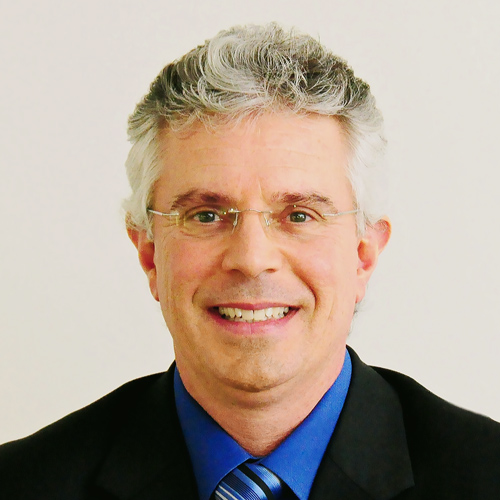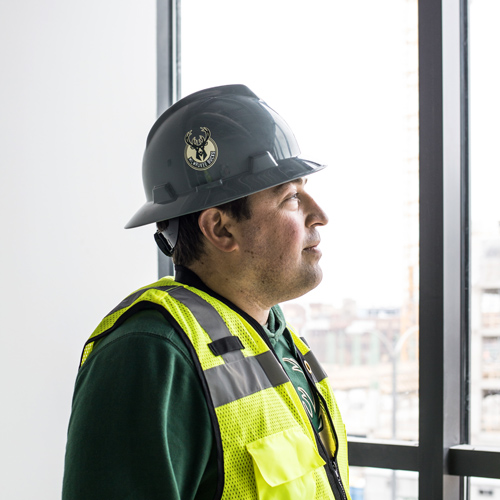Art Roman has managed more than $1.3 billion in capital construction projects over his career. He’s a trained architect and a respected leader in design and construction. He once ran an industrial engineering group and was even a vice president at a Chicago-based real estate and program management firm. And he’s worked in healthcare, mixed use, higher education, industrial and distribution, and many other industries.
Although Roman’s experience is broad, a few common threads have united his career. He stresses the value of a sound design, believes in building strong project teams, and thrives when carrying a project from concept to completion.
This wide experience is essential in Roman’s current role. Today, he is the director of design and construction at US Foods. In his role, Roman leads an active development program for the well-known foodservice distributor with roughly $23 billion in annual revenue. US Foods—formerly the nation’s 10th largest private company—went public in 2016. The growing organization has about 25,000 employees who work in warehouses, distribution centers, test kitchens, truck maintenance facilities, wholesale stores, administrative, and sales offices, with locations all across the United States. Each one contains highly engineered systems ranging from CO2 refrigeration to computer infrastructure, as well as other technologies that allow US Foods to deliver food and food-related products to about 250,000 customers.
In order to help US Foods thrive, Roman leads a design and construction program built on research and continuous design improvement. This is centralized on developing facilities that delight the customer and promote efficient operations.
“US Foods is an innovative company with operations, sales, and information technology offerings that make our customers’ lives much easier,” Roman says. “And my team has to support that with buildings that enable US Foods to execute at a high level each and every day.”
BUILDING THE RIGHT TEAM
Roman is responsible for feasibility studies, site selection, analysis support, design, construction management, and more. He manages multiple projects in a fast-paced environment. He’s able to accommodate this volume without sacrificing quality through standardization, exporting best practices, and hiring the right people.
In structuring his department, Roman follows a few rules he developed earlier in his career while at companies such as BSA LifeStructures and DSC Logistics. First, he hires talented and trustworthy professionals. Next, he establishes sound relationships with internal stakeholders and partners. Then, he creates the best possible team of qualified and dependable suppliers, vendors, contractors, engineers, and other key third parties. Finally, he institutes strong communication links to ensure everyone involved in a project from start to finish receives constant updates so that they’re aware of any changes to reports, budgets, or schedules.
At the same time, Roman and his team work closely with operators, logistics experts, and internal teams to create best design practices. Together, the US Foods design and construction teams create standard prototypes they later adapt to specific locations, requirements, and sizes. Roman has been able to fine-tune his core team, and because of his experience, he is able to present project partners with early working documents normally associated with advanced stages.
Upon completion of a project, the company initiates post-project studies through a continuous improvement program that examines what aspects of the project can be done more efficiently. Doing so saves time, reduces maintenance costs, and eliminates repeated mistakes. “It’s most important to focus on only what really matters,” Roman says. “You determine that by knowing what really drives the success or failure of each and every project.”
GOING GREEN IN SEABROOK
To reach more new customers in New England, Roman and his team opened a new US Foods distribution center in Seabrook, New Hampshire. A retrofit of the former Poland Spring bottling plant, the 500,000-square-foot, LEED Silver facility opened in May 2015.
After searching for a suitable greenfield site, US Foods settled on the 12-year-old bottling facility and converted what was once a simple building into a state-of-the-art food service distribution center. Upgrading the space to US Foods standards required a dramatic makeover, as specialized teams installed complex refrigeration systems into a large building designed for another use.
With the Seabrook facility, US Foods continues its ongoing commitment to responsible and sustainable practices in both products and operations. Environmentally friendly components include LED lighting and a CFC-free refrigeration system.
“We build in a sustainable way because it’s the best way to produce modern, cost-effective facilities that support our value proposition,” Roman says. “If we design efficient food facilities, then our company can execute well and our customers benefit. The buildings should get out of the way.”
FULL SERVICE IN FLOWOOD
For Mississippi’s Rankin County, 2015 was a year dedicated to rebuilding. In April 2014, an EF3-rated tornado tore through numerous communities, destroying many homes and businesses. Among the wreckage was a US Foods distribution center in Flowood. Just 15 months later, the company opened a bigger and better distribution center through which it serves customers located mainly in Mississippi and Louisiana.
The new building is certified LEED Silver and loaded with state-of-the-art features, including a demonstration kitchen where US Foods’ culinary experts develop menus, test products, and train others. It also features a sales office, truck-fueling and maintenance facilities, produce-ripening rooms, and temperature-controlled zones.
The greenfield project was designed to accommodate future expansion, as US Foods continues to grow throughout the region.
COMMITTED TO AUSTIN
Prior to rebuilding in Flowood, US Foods built a similar space in Austin, Texas. Although Roman has a history of building with sustainable principles, the distribution center marked the company’s first official foray into LEED-certified green building.
The new project was designed to be as efficient as possible from top to bottom. Energy-efficient lighting, no-water landscaping, and other sustainable efforts led to dramatic results. The company’s Austin facility is also about 60 percent more energy efficient than its previous, smaller location.
The center also increases US Foods’ reach into South Central Texas while adding more than 100 jobs. The US Foods project team found themselves repeating those stats to potential new neighbors.
“People are sometimes reluctant to have new industrial neighbors, but we’ve demonstrated time and time again that US Foods is an asset in any community,” Roman says. “We build in a sustainable way while increasing employment and outpacing the market in compensation.”
Roman and his colleagues also strive to minimize congestion and work transparently with municipalities to address any concerns. To demonstrate its commitment to the community, US Foods donated roughly 5,000 pounds of food to a local food bank at the facility’s opening.
As US Foods considers other growth opportunities, Roman expects to remain busy. He’s keeping an eye on how automation and other emerging technologies may change the industry while working to keep his team lean and effective. “We do exciting projects and are looking forward to creating the very best facilities in our industry,” Roman says.
Roman is still enjoying the career he started in 1980. While there may be challenges along the way, he’s able to rely on lessons learned to navigate any obstacle. He’s held design and construction positions at various companies in many industries, but his goal remains the same: to create well designed, cost effective, high-quality buildings, delivered with optimized schedules.
Environmentally Focused
Reducing environmental impact and increasing efficiency of its operations has been a source of pride for US Foods for years. By focusing on these initiatives, it not only allows the company to improve business operations, but it also helps the communities that US Foods serves.
Some of US Foods’ initiatives include:
• Performing energy tune-ups in order to optimize refrigeration system operation
• Incorporating new lighting in US Foods’ facilities, such as LEDs with occupancy sensors. LEDs implemented with motion sensors with three-minute delays can save up to about 80 percent of usage compared to previous implementations.
• Constructing new (or a major retrofit of) buildings that incorporate the latest measures. This reduces outside air infiltration such as vertical store dock plates or fast-acting insulated doors between temperature zones within the facility.
• Using variable frequency drives (VFD) on condensers and evaporators. These systems provide the ability to run motors at variable speeds to better match cooling loads, which reduces energy use. VFDs implemented on condensers can save on average about 35 percent of usage.
_____
Innovative has been able to successfully develop and maintain business relationships with nationally recognized food storage companies, like our time-honored affiliation with US Foods, through our dependability, trustworthiness, and commitment to excellent products.
Our state-of-the-art manufacturing facility, located in the Shenandoah Valley, is where our team takes pride in the products we design, manufacture, install, and maintain. Our web-based software programs are also tools available for facilities to manage service, compliance, and process safety management. With our custom designed refrigeration systems and software, there is no limit to your success.
***
As part of the US Foods expansion at Fort Mill, South Carolina, many of the existing rooms were reconfigured and/or repurposed, most with a significant change in temperature requirements. Working with Art Roman and the ESI Group, CRT Design and Engineering evaluated the existing refrigeration system and developed an overall strategy that involved repurposing some existing headers and adding some new headers to provide the most efficient system that was easily constructible, provided the most energy efficient system practical, while also keeping the facility fully operational.
Prefabricated “Mini” penthouse evaporators were used to service the loads. This configuration was a very practical solution to provide refrigeration to each of the many different rooms, both new and repurposed, while also keeping the evaporators out of the space where they could be maintained from the roof.
CRT Design and Engineering is a mechanical engineering firm that specializes in of all facets of industrial refrigeration.
***
For over forty years, The Fricks Company has specialized in the design and construction of the most durable concrete floor surfaces in the world. We are proud to serve US Foods and our many other industry partners.
Contact us at [email protected] or (817) 560.8137 to learn more.
www.Fricksco.com


